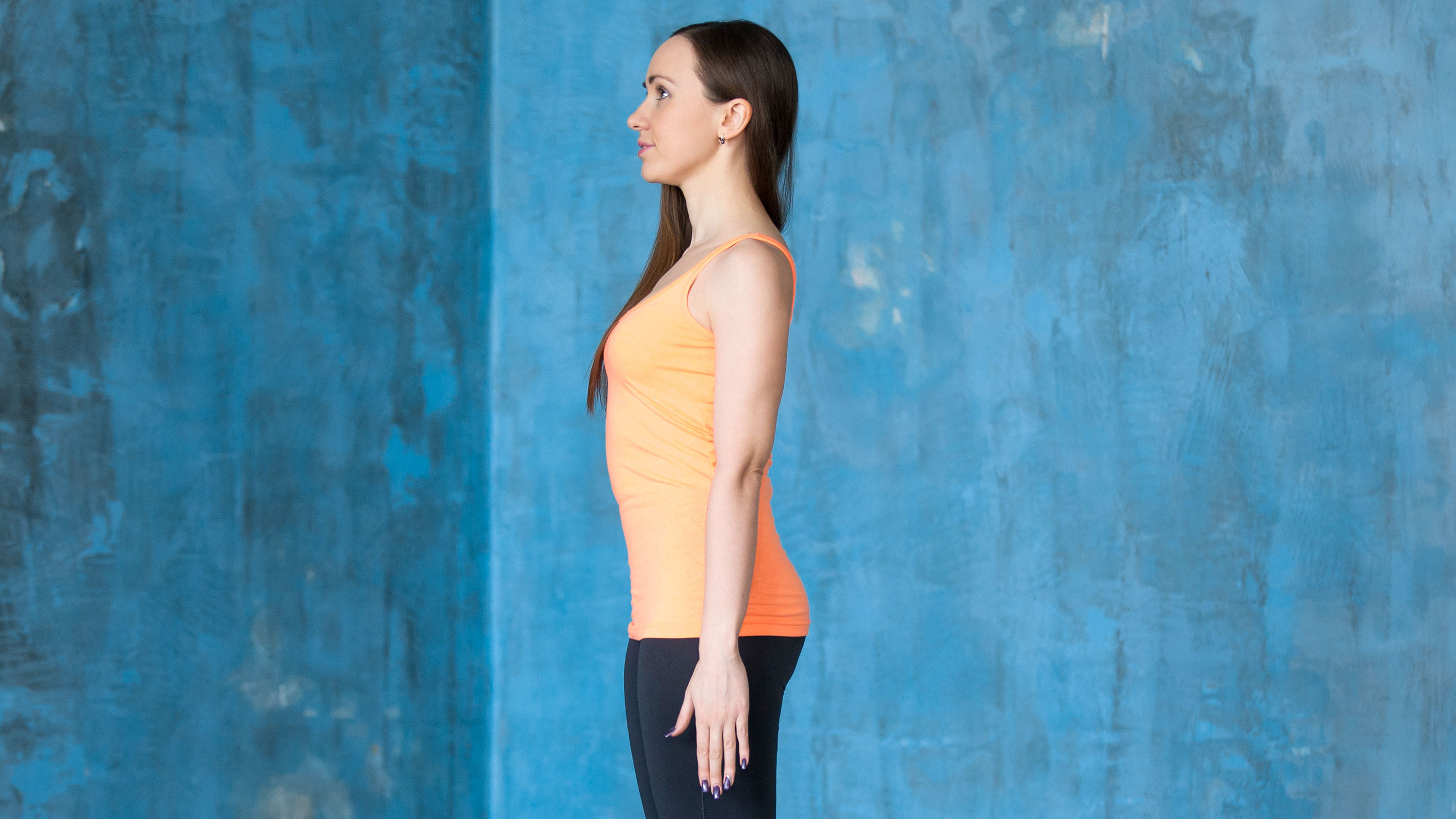How to improve posture: expert tips to help you stand tall and reduce back pain
It's easy to improve posture - and banish back pain - with just a few key changes


If you’re wondering how to improve your posture, chances are you’ve already started to notice some of the negative effects and niggles that come from neglecting our spine health.
Looking after the skeletal system is often at the back of our minds until it becomes an issue, but it pays to make it more of a priority. Bad posture can lead to issues with your musculoskeletal system, resulting in lower back pain, neck aches, hunched shoulders, and even jaw pain, headaches and migraines.
- The best posture correctors to improve alignment and reduce pain
- Best back exercise to build strength and improve posture
- Working from home? These are the best office chairs to support your spine
‘It’s important to maintain our spine’s natural ’S’ shaped curve, which is key for optimal spinal health,’ says Poonam Shah, senior osteopath at Medical Home Visit Marylebone. ‘Slouched posture is detrimental over time as this can cause muscular strain as well as compression of the diaphragm, which can lead to breathing issues and strain on joints.’
Adding insult to injury is the fact that modern life has been shown to exacerbate the problem. ‘Postural correction has always been a popular presentation in clinic as we are living in a generation of sedentary lifestyles, with increased usage of devices and screen time,’ Shah explains.
So how can we fix poor posture? After days, months and even years of bad habits, this isn’t going to happen overnight, but it’s nevertheless important to incorporate small steps into our everyday routine. For example, Shah’s approach combines osteopathic techniques with advice on lifestyle habits, best form of exercise, ergonomics and dietary recommendations.
If you’re suffering, an osteopath or chiropractor can provide you with an accurate diagnosis and help you understand why your posture might be dysfunctional. In the meantime, making the following adjustments can also help.
Avoid sitting for too long at a time
It’s widely accepted that too much sitting is bad for you - and it can be especially problematic if you find yourself working from home in the wake of coronavirus, thanks to increased workloads and the absence of a daily commute.
Start your week with achievable workout ideas, health tips and wellbeing advice in your inbox.
‘Working from home has meant that patients haven't been able to take their regular breaks and get their daily steps in,’ says Shah. ‘If you’re sitting for a long time, simply getting up and moving around every 20-30 minutes can make a massive difference,’ she advises.
This is especially important if you spend a lot of time sat at a desk, as being in one position for more than 45 minutes can result in back pain and poor blood circulation. Shah’s advice? ‘An easy trick is to stand up every time you’re on the phone.’ A fitness watch that monitors your standing time, such as the Apple Watch, can also help.
Improve posture with exercise
Following the theme of moving more, incorporating specific strength, cardio and stretching exercises into your workout regime is also beneficial when it comes to fixing posture.
‘Try to incorporate a good balance of exercises throughout your week to help keep your muscles and joints working as they should - this will also relieve some of the discomfort you feel,’ says Owain Evans, chiropractor and member of the British Chiropractic Association.
If you’re already struggling with pain, consider low-impact forms of cardio such as swimming, walking and dancing, incorporating light weights to build strength. Pilates and yoga are ideal for stretching and strengthening too, whilst our best back workout will help build strength and improve posture. A good foam roller can also play a part.
- Struggling with joint pain? Try the best supplements for joints
Build good posture habits
Exercise on it’s own is not enough to improve posture and banish pain - it’s also necessary to review your daily lifestyle habits and make changes where necessary. Slouching on the sofa, lying twisted in bed, carrying heavy bags (particularly on one shoulder) and even wearing the wrong shoes can all contribute to poor posture and trigger back pain. So try to be aware of your posture throughout the day, and make adjustments as needed. You could also consider wearing a posture corrector to help you stay aware of your spine positioning.
Set up your workspace for posture success
It’s not just sitting for too long that can impact your posture - the way you sit plays a part, too. ‘Poor work spaces that aren’t designed for a full day’s work cause us to slouch forward, causing extra pressure on the upper back and spine,’ says Shah.
This is especially important right now, given that for many of us ‘the office’ currently means the kitchen table or - even worse - the bed. ‘There has been a massive increase in patients booking in for appointments post-lockdown due to not having the right work station at home' Shah reveals. 'The biggest issue has been patients working on the couch, on their bed and on kitchen stools.’
So what can you do? One of Shah’s top tips is to invest in a laptop stand, so that the top third of your screen is at eye level. ‘If you find yourself looking down at your laptop, this can cause strain into the back of your neck, often leading to the development of ‘tech neck’ and a hunched appearance.'
A good chair with back support is also vital. ‘Without this, you are forced into leaning forward and exacerbating lower back pain,’ Shah says.
Kirsty is an accomplished journalist specialising in the wellness industry. She has previously written for titles including Grazia, Popsugar, Metro.co.uk, Elle UK and the Sunday Telegraph. You’ll find her running around Windsor Great Park at 6am most mornings (before her toddler, Clementine Lilac, wakes up), followed by a virtual barre class with the team at Psycle London – where that barre burn is just so addictive. Kirsty loves to stock up on new activewear; because, let’s face it, you can never have too many pairs of sculpting leggings. She's always keen to try/endure the latest workouts to come to London. Kirsty also enjoys rustling up nutritious family meals and indulging in her newfound hobby: flower pressing.
